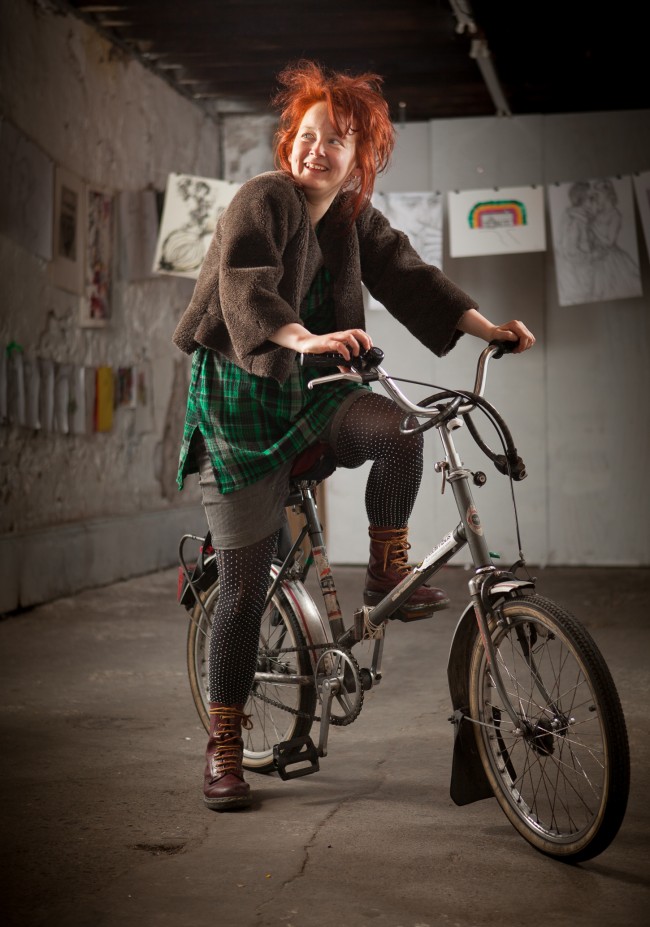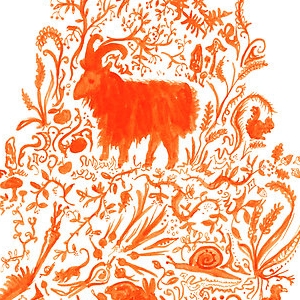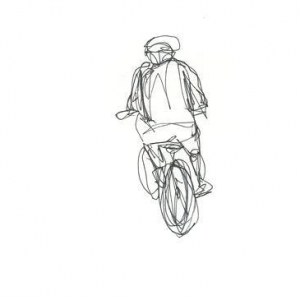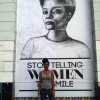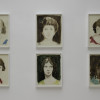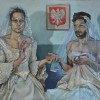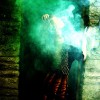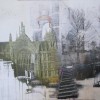MM: Where do you usually get your inspiration?
MH: Hate to be a cliché, but most things I come across that I like inspire me in some way. Things I don’t like also inspire me too, I suppose. I don’t really discriminate, for me there’s no distinction between ‘high-brow’ and ‘low-brow.’ If something really interests me, I will probably want to make art about it. But to be more specific, I like history and folklore, animals, food, maps, comics, bikes, and I am fascinated by the paradox that modern communication has brought to the human condition – we are more ‘in touch’ than ever before, but physically, we don’t touch as much because communication technologies operate remotely.
MM: What comes first, concept or process? Do you decide that something is going to be printed, drawn or performed right away or is it a matter of convenience?
MH: Usually concept. It’s not that I have an idea and think, “So will I perform this or just draw a picture?” The idea suggests the medium. I’ll have an idea for an act – that must be performed. If I feel like drawing something, I’ll draw it. If I like the drawing I’ll make a print of it later, if it suits the image. That said, in certain respects I’d consider the act of drawing to be on a par with doing a performance – the making of the drawing is the important thing for me, and the fact that there’s a drawing left at the end is just a happy coincidence.
MM: What are you currently working on?
HM: Today I started a lithograph inspired by an Irish folk tale about a musician who is kidnapped by a black goat and forced to play for the fairies. I am thinking and scribbling a lot about a performance I’d like to do soon involving some statues on O’Connell Street in Dublin. Also I’m preparing to launch Papergirl Dublin 2013 soon.
MM: How did the Papergirl project come about?
HM: Well Papergirl Dublin is directly inspired by Papergirl Berlin, which started in 2006 when the Berlin police started to crack down on graffiti. People were looking for ways to put art on the streets and a lady called Aisha Ronniger decided to throw art at people from her bike. I lived in Germany for a while and heard about it around 2008, and when I returned to Dublin, every summer I thought, “Someone should do that here,” and after a few years I realised I’d have to do it. So I did.
MM: What were you hoping to achieve?
HM: Well, I was first of all hoping to get enough submissions from people to have a good-sized show and then have a substantial amount of art to distribute around the city afterwards. (That’s how it works, I put out an open call for any two-dimensional art. Anyone can give work and everything received is put in an exhibition before being rolled up and thrown at unsuspecting people in the street). On a more philosophical level, I wanted to disrupt the everyday, surprise people and maybe inspire someone who maybe wasn’t very interested in art before. Expand their idea of what constitutes art and what place art has in society.
MM: Do you think the current economic climate has an influence in people wanting to take part in a non-profit initiative?
HM: I think it does, to an extent. Some people will only move their arises for payment, nothing you can do about that. I don’t believe in glamourising or romanticising economic hardship, I would never go so far as to say that the recession is a fantastic thing and has ‘saved Ireland’, but it certainly has forced people to take a step back and get more involved with things that will not benefit them financially, because so many things nowadays are run on a shoestring. One aspect of this is that, because so many people are unemployed, they do have more time to get involved in things like this, to volunteer.
MM: How do you think the recession has influenced the Dublin ‘art scene’ as a whole?
HM: There seem to be far more, small, artist-run initiatives popping up now than say five or six years ago. One factor in this is probably the fact that there’s so much empty space, so many vacant buildings and lots (and half built buildings that will probably never be finished), a feeling that there’s lots of breathing space. The city council set up a scheme allowing people to send proposals to use empty buildings that have been repossessed by the state asset management agency – it did take them a few years before they did that but it’s good that they’re open to it. Of course, there are still big name galleries that seem to operate on the idea that art is a product, but that seems very far removed from my own experience. I don’t think business is very good for them right now.
MM: What would you say are the major challenges to being an artist in Dublin today?
HM: I could write that thing everyone writes about the snobbery and self-referentiality of the art classes and the disdain and hostility of the other classes, but instead I’ll tell you what I heard earlier today. I was walking past a gallery in Temple Bar and some lad behind me states to his mate, “Hipster art gallery. And they actually expect people to go in!”
